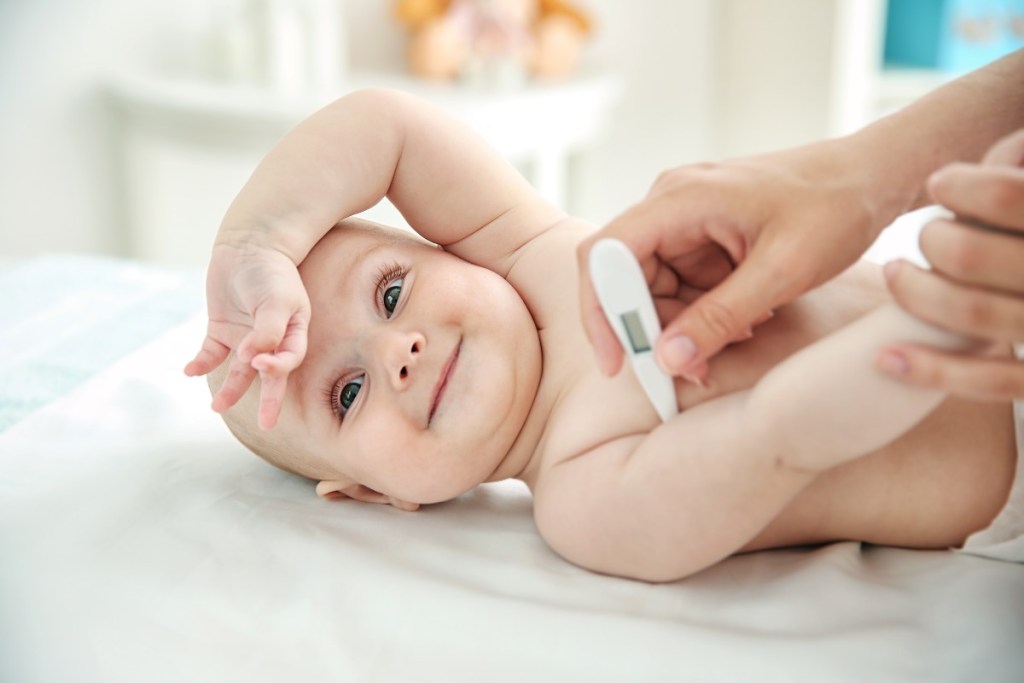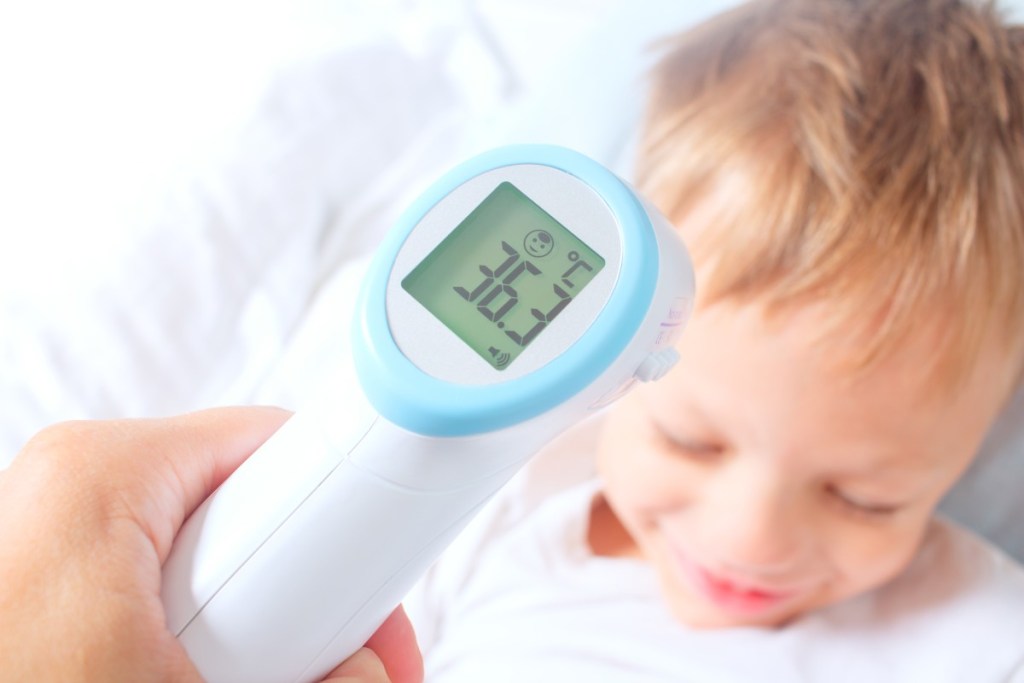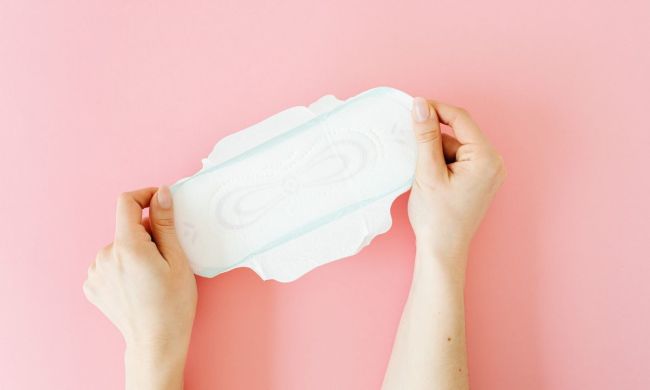It’s easy to tailspin into a complete parental panic when your little snuggle bug feels warm to the touch. But the reality is: Fevers will happen. Babies get colds and viruses — and even teething can elevate a wee one’s temperature.
Undoubtedly, this can be stressful for new moms and dads. But having the right thermometer on hand can keep you informed and give you peace of mind. Of course, with endless options to choose from, it can be daunting to pick — what type of thermometer is best for your babe? What’s the most accurate way to get a reading and what “bonus” features are best? We’re breaking down all the important info — because your sweetheart’s health is of the utmost importance.

What are the different types of thermometers?
Not all baby thermometers are created equal. Here are all the different types to choose from:
Rectal: Using a rectal thermometer on your newborn might sound intimating to a new parent. But it’s really rather easy. Simply position your baby on their belly over your lap. Use a little bit of Vaseline or Aquaphor to lubricate the thermometer tip and gently insert about a half an inch (or slightly more) into your child’s rectum. If you feel any resistance or your child is in distress, stop and try again. Rest assured that this won’t hurt or harm your sweetheart — although, admittedly, you might feel a little traumatized on your first try.
A rectal thermometer will give you the most accurate reading in children ages 3 and under. When every decimal point counts, you want to ensure you know exactly how high your baby’s temperature is.
Oral: An oral thermometer must stay under a child’s tongue for a certain amount of time, so, to this end, it’s almost entirely useless for infants. However, once your toddler is able to understand and follow simple commands, you may be able to switch to this type of thermometer. Similarly, an axillary thermometer is pressed inside the underarm to get a core body reading. Do note, though, that resulting readings are not as accurate as those taken with a rectal thermometer.
Ear: In a pinch, you can stick an ear thermometer in your baby’s lobe to get an approximate temperature. It takes but a few moments to register and can be especially helpful with wigglier infants and fussier toddlers. Of course, if a high temp registers, you might want to follow up with a rectal thermometer for accuracy’s sake.
Forehead: A forehead thermometer is either pressed to the top of the head or scanned to give a quick and pain-free reading. Again, it is convenient, but it’s not nearly as accurate or dependable as rectal, oral, or underarm options.
Baby thermometer features to consider
Shopping the shelves of your favorite baby store? You don’t have to play eenie-meeny when it comes to thermometers. Even if you know you’re looking for a forehead scanner or a rectal option, there are additional features that may make or break your decision-making process.
Digital Option: When your baby cries out in the middle of the night, and you discover that they’re hot with fever, you want to assess the situation quickly and efficiently. Of course, at 3 a.m., you might feel a little too groggy to think straight and act fast. The right thermometer can help mitigate human error and ensure accuracy. One with a digital display can take the stress out of reading (nay, squinting) to measure temperature. What’s more, some nifty options will read the temperature to you out loud.
Backlit: You will most likely want to check your infant or toddler’s temperature throughout the night if they are sick. It’s best if you don’t wake a sleeping baby, so you’ll want to keep the lights dim and have a backlit thermometer handy, so you can actually see what you are doing.
Memory: Yes, you can write down Baby’s temperature throughout the night to keep a log for tracking purposes. But if you forget or if you’re too tired or get distracted, a memory-display feature can show you the progression of your little one’s temperature.
When your baby is sick, you will do anything to ensure they get better fast. That starts with diligently monitoring your toasty tot’s temperature. To do this, you will want the right thermometer. The baby-health aisle can be an overwhelming place for new parents, so it is important to know what you need in advance. Our guide can help. You’ve got this.



